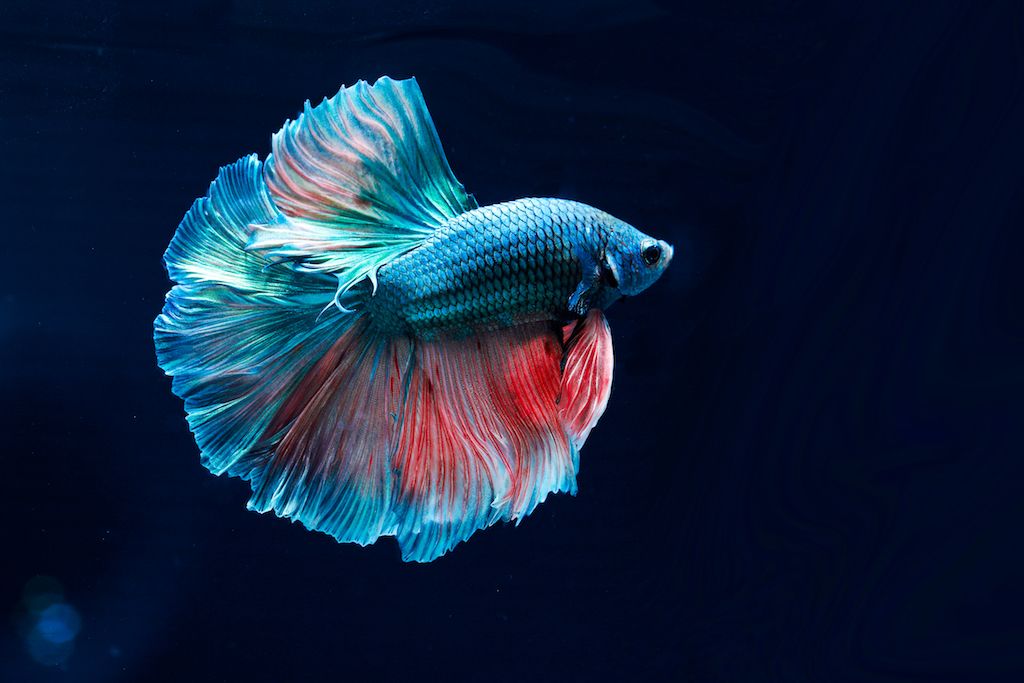The Ultimate Betta Fish Treatment Overview for New Animal Owners
The Ultimate Betta Fish Treatment Overview for New Animal Owners
Blog Article
Reproducing Betta Fish: a Comprehensive Step-By-Step Guide to Successfully Raising Baby Bettas From Eggs to The Adult Years
Breeding Betta fish is a thorough venture that calls for mindful preparation and implementation to make sure the effective growth of fry from eggs to mature fish. As the male Betta diligently constructs a bubble nest and guards the precious eggs, the subsequent stages of treatment and change need attention to information and understanding of finest practices.

Picking Breeding Pairs
When beginning on the trip of reproducing Betta fish, picking the appropriate reproduction sets is vital to accomplishing preferable traits and a healthy lineage - betta fish. The initial action in this process is to determine the particular traits you wish to improve or preserve, such as color, fin type, and physique. It is important to select genetically varied pairs to prevent inbreeding, which can cause health concerns and unwanted attributes
Examine prospective breeding prospects carefully. A healthy male Betta must display vibrant colors, an energetic attitude, and well-formed fins, while the woman ought to additionally show lively coloration and a rounded tummy, suggesting readiness for spawning. Observing the personality of both fish is essential, as hostile or extremely timid people may not reproduce efficiently.
Maintaining records of the moms and dad fish's origins can assist you track genetic characteristics and potential problems. Inevitably, spending time in the option procedure will significantly boost the chance of creating strong, vivid children that satisfy your breeding objectives.

Preparing the Reproduction Container
Producing an optimum reproduction setting is a vital step after choosing appropriate sets for Betta fish. The reproduction container must be particularly developed to offer comfort and promote the natural breeding behaviors of the fish. Begin with a storage tank dimension of a minimum of 10 gallons to ensure appropriate area for both the male and female Bettas.
Maintain a mild filtration system to maintain the water tidy while avoiding strong currents that can emphasize the fish. Furthermore, an air stone can be included in provide oxygenation without interrupting the water surface area way too much.
Temperature level law is essential; aim for a steady variety of 78-82 ° F(25-28 ° C) utilizing a dependable heating system. The pH level need to be preserved in between 6.5 and 7.5, and routine water adjustments are needed to make sure high water quality.
Include drifting plants or generating mops to produce concealing places for the female, while additionally motivating bubble nest building by the man - betta fish. Make certain the tank is complimentary from sharp designs and any kind of possible dangers, as the well-being of the fish should always be prioritized during this essential phase of breeding.
The Reproduction Refine
Usually, the breeding procedure for Betta fish entails a series of unique and visible behaviors that show readiness for reproduction. The male Betta starts by building a bubble nest at the water's surface area, which click resources functions as a website for the fertilized eggs. This nest is vital, as it gives a secure atmosphere for the eggs till they hatch.
As soon as the nest is developed, the male will certainly present courtship actions, such as flaring his fins and showing vivid colors to bring in the woman. The lady, upon picking up the man's readiness, will respond by showing vertical red stripes along her body, signaling her receptiveness.
The fertilized eggs after that drop to the bubble nest, where the male carefully gathers and returns them to the nest. Following this, the male presumes obligation for safeguarding the nest and making sure the security of the eggs till they hatch, commonly within 24-36 hours.
Caring for Betta Fry
Caring for Betta fry requires mindful focus to their setting and nourishment to make sure healthy development and development. After hatching, Betta fry are linked here incredibly tiny and susceptible, necessitating a secure and tidy environment.
Feeding Betta fry is equally vital. Feed them small amounts a number of times a day, being mindful not to overfeed, which can lead to water quality problems.
Transitioning to Grownup Bettas
As Betta fry mature, transitioning them to grown-up Bettas is a crucial phase that needs cautious monitoring of their atmosphere and social interactions. This procedure commonly begins when the recommended you read fry get to around 6 weeks of age, whereupon they can be progressively presented to a much more organized living setting.
To promote this change, it is necessary to guarantee that the water criteria-- such as temperature level, pH, and ammonia degrees-- are ideal and steady. Adult Betta fish flourish in warm water (around 78-80 ° F) with a pH of 6.5 to 7.5. Gradually adapt the fry to these conditions to minimize stress.
Social interactions are an additional essential factor; man Bettas are infamously territorial and hostile. It is recommended to separate males right into private tanks as they mature. Female Bettas can be housed together, but care needs to be required to keep an eye on for indications of aggression.
In addition, nutritional changes should be made as the fry grow. Incorporate top notch pellets and live foods to sustain their growth and wellness. By handling these factors effectively, you can advertise an effective shift to their adult years for your Betta fish.

Final Thought
Effective reproduction of Betta fish needs mindful interest to detail throughout the entire procedure, from picking genetically varied pairs to supplying optimum care for fry. By making sure ideal breeding conditions and maintaining water high quality, the chance of healthy offspring boosts dramatically. Furthermore, a balanced diet regimen and gradual adaptation to adult atmospheres are crucial for the development and growth of Betta fish. Adhering to these actions diligently fosters a flourishing populace of Betta fish, improving both their health and wellness and vitality.
Report this page